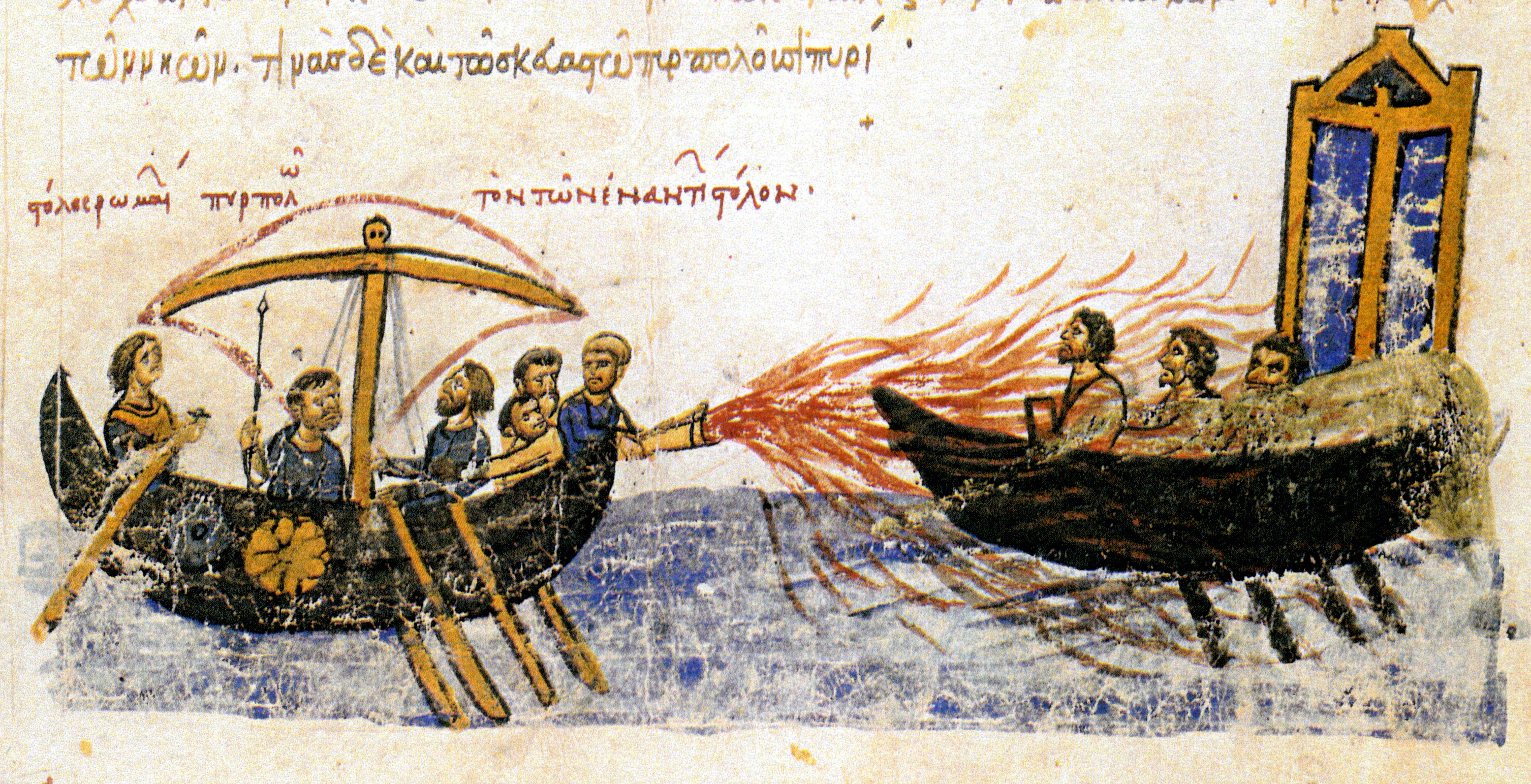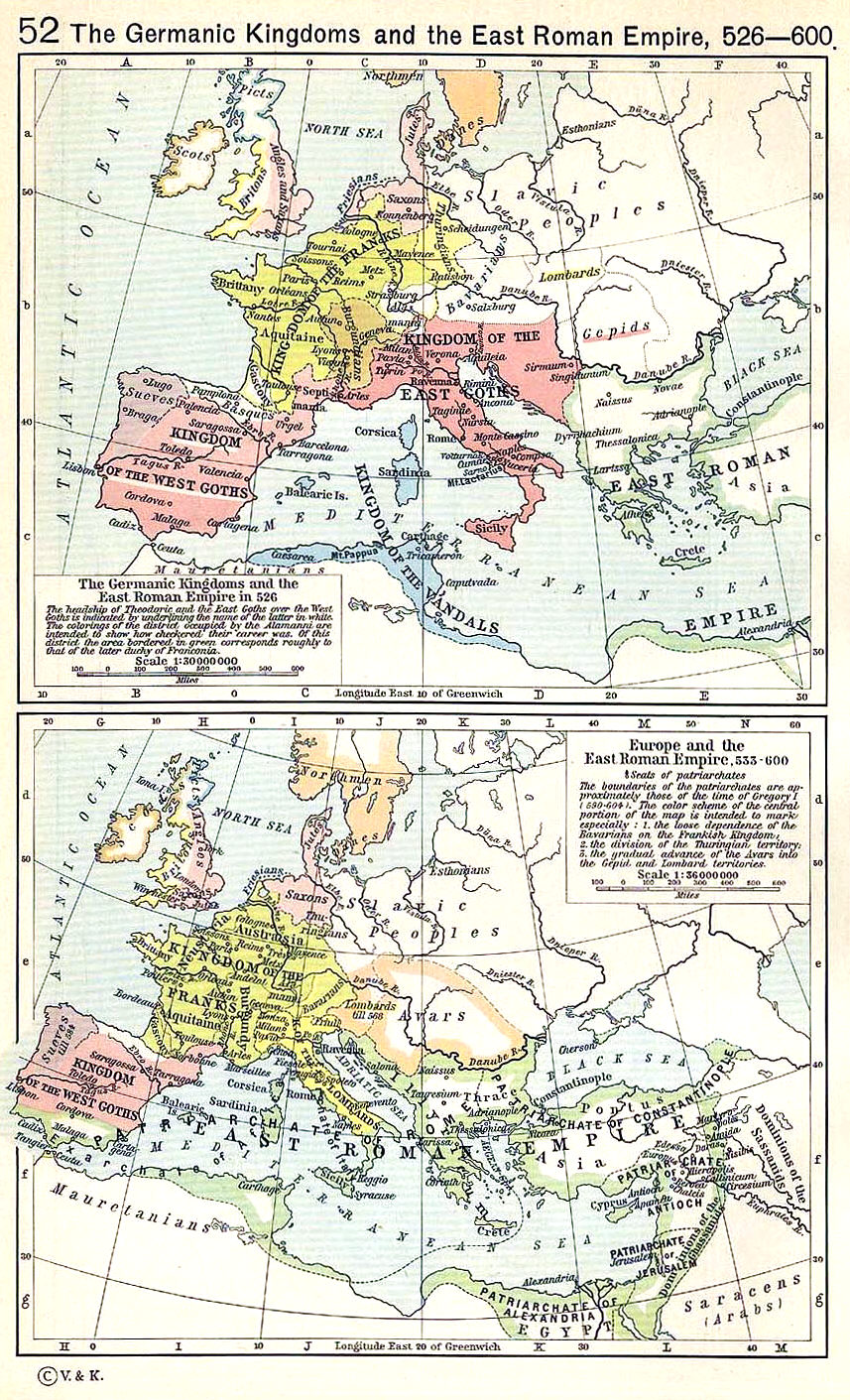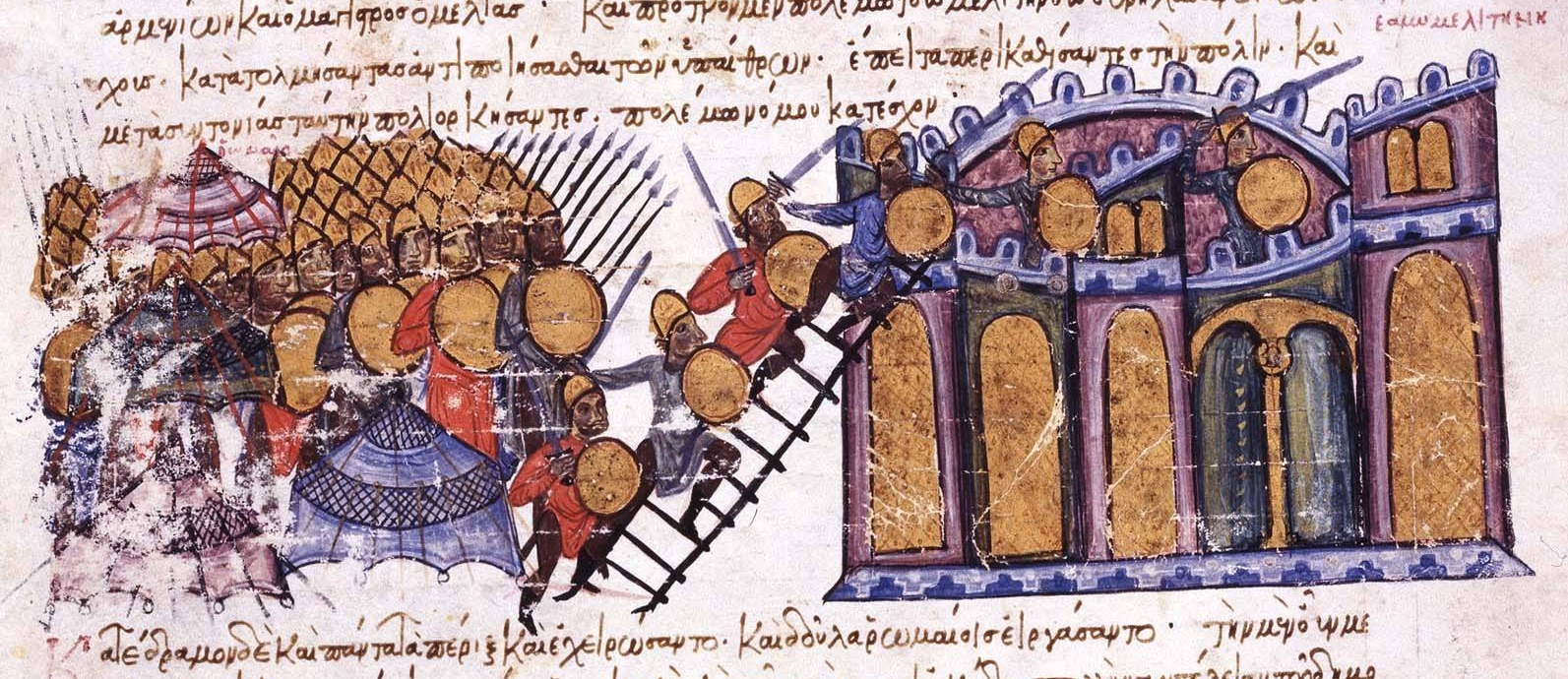|
Theophanes (chamberlain)
Theophanes (, fl. ca. 925–945) was a Byzantine palace official and the chief adviser of Emperor Romanos Lekapenos (r. 920–944) during most of his reign. He was also an active and able diplomat, and led the naval defense of Constantinople against the Rus' invasion of 941. Biography Nothing is known of Theophanes's origin and early life. He first appears in the sources in October 925, as a ''protovestiarios'' in the court of Emperor Romanos I Lekapenos. In that month John Mystikos was dismissed in disgrace, and Theophanes took his place as ''paradynasteuon'', or chief imperial advisor. Unlike Mystikos, he proved both capable and loyal, and remained the chief figure of the government for the remainder of Romanos's reign.. At that time, the Byzantine Empire was embroiled in a protracted and disastrous war with Bulgarian Tsar Simeon (r. 893–927). In 927, however, Simeon died, and his infant son, Peter, ascended the Bulgarian throne under the regency of his uncle George Sur ... [...More Info...] [...Related Items...] OR: [Wikipedia] [Google] [Baidu] |
Floruit
''Floruit'' ( ; usually abbreviated fl. or occasionally flor.; from Latin for 'flourished') denotes a date or period during which a person was known to have been alive or active. In English, the unabbreviated word may also be used as a noun indicating the time when someone flourished. Etymology and use is the third-person singular perfect active indicative of the Latin verb ', ' "to bloom, flower, or flourish", from the noun ', ', "flower". Broadly, the term is employed in reference to the peak of activity for a person or movement. More specifically, it often is used in genealogy and historical writing when a person's birth or death dates are unknown, but some other evidence exists that indicates when they were alive. For example, if there are Will (law), wills Attestation clause, attested by John Jones in 1204 and 1229, as well as a record of his marriage in 1197, a record concerning him might be written as "John Jones (fl. 1197–1229)", even though Jones was born before ... [...More Info...] [...Related Items...] OR: [Wikipedia] [Google] [Baidu] |
Irene Lekapene
Irene Lekapene (born Maria; , , died ) was the Empress consort of Peter I of Bulgaria. She was а daughter of Christopher Lekapenos, son and co-emperor of Romanos I Lekapenos, and his wife ''Augusta'' Sophia. Charles William Previté-Orton (1975Cambridge Medieval History, Shorter: Volume 1, The Later Roman Empire to the Twelfth Century. Volume 1 of The Shorter Cambridge Medieval History p. 256 To prove himself a worthy successor to his father both at home and in the eyes of foreign governments, Bulgaria's new emperor Peter I made a show of force by invading Byzantine Thrace in May 927, but showed himself ready to negotiate for a more permanent peace. Romanos seized the occasion and proposed a marriage alliance between the imperial houses of Byzantium and Bulgaria to end the War of 913–927. Romanos arranged for a diplomatic marriage between his granddaughter Maria and the Bulgarian monarch.Milan Loos (1974). ''Dualist Heresy in the Middle Ages''. Springer Science & Business Me ... [...More Info...] [...Related Items...] OR: [Wikipedia] [Google] [Baidu] |
Edessa, Mesopotamia
Edessa (; ) was an ancient city ('' polis'') in Upper Mesopotamia, in what is now Urfa or Şanlıurfa, Turkey. It was founded during the Hellenistic period by Macedonian general and self proclaimed king Seleucus I Nicator (), founder of the Seleucid Empire. He named it after an ancient Macedonian capital. The Greek name (''Édessa'') means "tower in the water". It later became capital of the Kingdom of Osroene, and continued as capital of the Roman province of Osroene. In Late Antiquity, it became a prominent center of Christian learning and seat of the Catechetical School of Edessa. During the Crusades, it was the capital of the County of Edessa. The city was situated on the banks of the Daysan River (; ; ), a tributary of the Khabur, and was defended by Şanlıurfa Castle, the high central citadel. Ancient Edessa is the predecessor of modern Urfa (; ; ; ), in Şanlıurfa Province, Turkey. Modern names of the city are likely derived from Urhay or Orhay (), the ... [...More Info...] [...Related Items...] OR: [Wikipedia] [Google] [Baidu] |
Surrender Of The Mandylion To The Byzantines
Surrender may refer to: * Surrender (law), the early relinquishment of a tenancy * Surrender (military), the relinquishment of territory, combatants, facilities, or armaments to another power Film and television * ''Surrender'' (1927 film), an American romance directed by Edward Sloman * ''Surrender'' (1931 film), an American drama directed by William K. Howard * ''Surrender'' (1950 film), an American Western directed by Allan Dwan * ''Surrender'' (1987 American film), an American comedy directed by Jerry Belson * ''Surrender'' (1987 Bangladeshi film), a film directed by Zahirul Haque * "Surrender" (''Charmed'' 2018 TV series), a television episode * "Surrender" (''Outlander''), a television episode * "Surrender" (''Third Watch''), a television episode * "Surrender" (''Star Trek: Picard''), an episode of the third season of ''Star Trek: Picard'' Music Albums * ''Surrender'' (Bizzle album) or the title song, 2015 * ''Surrender'' (The Chemical Brothers album) or the titl ... [...More Info...] [...Related Items...] OR: [Wikipedia] [Google] [Baidu] |
Parakoimomenos
The ''parakoimōmenos'' (, literally "the one who sleeps beside [the emperor's chamber]") was a Byzantine Empire, Byzantine Byzantine aristocracy and bureaucracy, court position, usually reserved for eunuch (court official), eunuchs. The position's proximity to the List of Byzantine emperors, emperors guaranteed its holders influence and power, and many of them, especially in the 9th and 10th centuries, functioned as the Byzantine Empire's chief ministers. History and functions The title was used anachronistically by various Byzantine writers for prominent eunuch court officials of the distant past, including Euphratas under Constantine the Great (reigned 306–337), the notorious Chrysaphius under Theodosius II (), or an unnamed holder of the office under Emperor Maurice (emperor), Maurice (). The position was probably created no later than the reign of Leo IV the Khazar (), when the chronicler Theophanes the Confessor mentions a "''koubikoularios'' and ''parakoimomenos”'' ser ... [...More Info...] [...Related Items...] OR: [Wikipedia] [Google] [Baidu] |
Bithynia
Bithynia (; ) was an ancient region, kingdom and Roman province in the northwest of Asia Minor (present-day Turkey), adjoining the Sea of Marmara, the Bosporus, and the Black Sea. It bordered Mysia to the southwest, Paphlagonia to the northeast along the Pontic coast, and Phrygia to the southeast towards the interior of Asia Minor. Hellenistic Bithynia was an independent kingdom from the 4th century BC. Its capital Nicomedia was rebuilt on the site of ancient Astacus in 264 BC by Nicomedes I of Bithynia. Bithynia was bequeathed to the Roman Republic in 74 BC, and became united with the Pontus region as the province of Bithynia and Pontus. In the 7th century it was incorporated into the Byzantine Opsikion theme. It became a border region to the Seljuk Empire in the 13th century, and was eventually conquered by the Ottoman Turks between 1325 and 1333. Description Several major cities sat on the fertile shores of the Propontis (which is now known as Sea of Marmara): Nicomedia ... [...More Info...] [...Related Items...] OR: [Wikipedia] [Google] [Baidu] |
Greek Fire
Greek fire was an incendiary weapon system used by the Byzantine Empire from the seventh to the fourteenth centuries. The recipe for Greek fire was a closely-guarded state secret; historians have variously speculated that it was based on saltpeter, sulfur, or quicklime, but most modern scholars agree that it was based on petroleum mixed with resins, comparable in composition to modern napalm. Byzantine sailors would toss grenades loaded with Greek fire onto enemy ships or spray it from tubes. Its ability to burn on water made it an effective and destructive naval incendiary weapon, and rival powers tried unsuccessfully to copy the material. Name Usage of the term "Greek fire" has been general in English and most other languages since the Crusades. Original Byzantine sources called the substance a variety of names, such as "sea fire" (Medieval Greek: ), "Roman fire" ( ), "war fire" ( ), "liquid fire" ( ), "sticky fire" ( ), or "manufactured fire" ( ). History Incendiary and ... [...More Info...] [...Related Items...] OR: [Wikipedia] [Google] [Baidu] |
Chelandion
''Chelandion'' () was a Byzantine galley warship, a variant of the '' dromōn'' that also functioned as a cargo transport. The term ''chelandion'' is derived from the Greek word ''kelēs'', " courser", and first appeared during the early 8th century. In the medieval Latin used in Western Europe, it was rendered ''chelandium'' or ''scelandrium'' (and thence the 12th-century ''sandanum'' transport), while the Arabs rendered the name as ''shalandī'' (plural ''shalandiyyāt'') and used it for a probably similar type of vessels in their own navies. In common with the general characteristics of the ''dromōn'' type, the ''chelandion'' was a bireme galley, i.e. with two rows of oars, which provided its main means of propulsion, although it also featured one or two lateen sails, and was steered by two quarter rudders at the stern. It could also be equipped with siphons for projecting the feared Greek fire, the Byzantine navy's secret incendiary weapon. The term ''chelandion'' is usual ... [...More Info...] [...Related Items...] OR: [Wikipedia] [Google] [Baidu] |
Byzantine Navy
The Byzantine navy was the Navy, naval force of the Byzantine Empire. Like the state it served, it was a direct continuation from its Roman navy, Roman predecessor, but played a far greater role in the defence and survival of the state than its earlier iteration. While the fleets of the Roman Empire faced few great naval threats, operating as a policing force vastly inferior in power and prestige to the Roman army, army, command of the sea became vital to the very existence of the Byzantine state, which several historians have called a "maritime empire". The first threat to Roman hegemony in the Mediterranean Sea was posed by the Vandals in the 5th century, but their threat was ended by the wars of Justinian I in the 6th century. The re-establishment of a permanently maintained fleet and the introduction of the dromon galley in the same period also marks the point when the Byzantine navy began departing from its late Roman roots and developing its own characteristic identity. Thi ... [...More Info...] [...Related Items...] OR: [Wikipedia] [Google] [Baidu] |
John Kourkouas
John Kourkouas (, ), also transliterated as Kurkuas or Curcuas, was one of the most important generals of the Byzantine Empire. His success in battles against the Muslim states in the East reversed the course of the centuries-long Arab–Byzantine wars and set the stage for Byzantium's eastern conquests later in the century. Kourkouas belonged to a family of Armenian descent that produced several notable Byzantine generals. As commander of an imperial bodyguard regiment, Kourkouas was among the chief supporters of Emperor Romanos I Lekapenos () and facilitated the latter's rise to the throne. In 923, Kourkouas was appointed commander-in-chief of the Byzantine armies along the eastern frontier, facing the Abbasid Caliphate and the semi-autonomous Arab Muslim border emirates. He kept this post for more than twenty years, overseeing decisive Byzantine military successes that altered the strategic balance in the region. During the 9th century, Byzantium had gradually recovered its ... [...More Info...] [...Related Items...] OR: [Wikipedia] [Google] [Baidu] |
Bosporus
The Bosporus or Bosphorus Strait ( ; , colloquially ) is a natural strait and an internationally significant waterway located in Istanbul, Turkey. The Bosporus connects the Black Sea to the Sea of Marmara and forms one of the continental boundary between Asia and Europe, boundaries between Asia and Europe. It also divides Turkey by separating Anatolia, Asia Minor from East Thrace, Thrace. It is the world's narrowest strait used for international waterway, international navigation. Most of the shores of the Bosporus Strait, except for the area to the north, are heavily settled, with the city of Istanbul's metropolitan area, metropolitan population of 17 million inhabitants extending inland from both banks. The Bosporus Strait and the Dardanelles Strait at the opposite end of the Sea of Marmara are together known as the Turkish Straits. Sections of the shore of the Bosporus in Istanbul have been reinforced with concrete or rubble and those sections of the strait prone t ... [...More Info...] [...Related Items...] OR: [Wikipedia] [Google] [Baidu] |
Rus' (people)
The Rus, also known as Russes, were a people in Early Middle Ages, early medieval Eastern Europe. The scholarly consensus holds that they were originally Norsemen, mainly originating from present-day Sweden, who settled and ruled along the Route from the Varangians to the Greeks, river-routes between the Baltic Sea, Baltic and the Black Seas from around the 8th to 11th centuries AD. The two original centres of the Rus' were Staraya Ladoga, Ladoga (''Aldeigja''), founded in the mid-8th century, and Rurikovo Gorodische (''Holmr''), founded in the mid-9th century. The two settlements were situated at opposite ends of the Volkhov (river), Volkhov River, between Lake Ilmen and Lake Ladoga, and the Norsemen likely called this territory ''Gardar''. From there, the name of the Rus' was transferred to the Middle Dnieper, and the Rus' then moved eastward to where the Finnic peoples, Finnic tribes lived and southward to where the Slavs lived. The name ''Garðaríki'' was applied to the ne ... [...More Info...] [...Related Items...] OR: [Wikipedia] [Google] [Baidu] |






